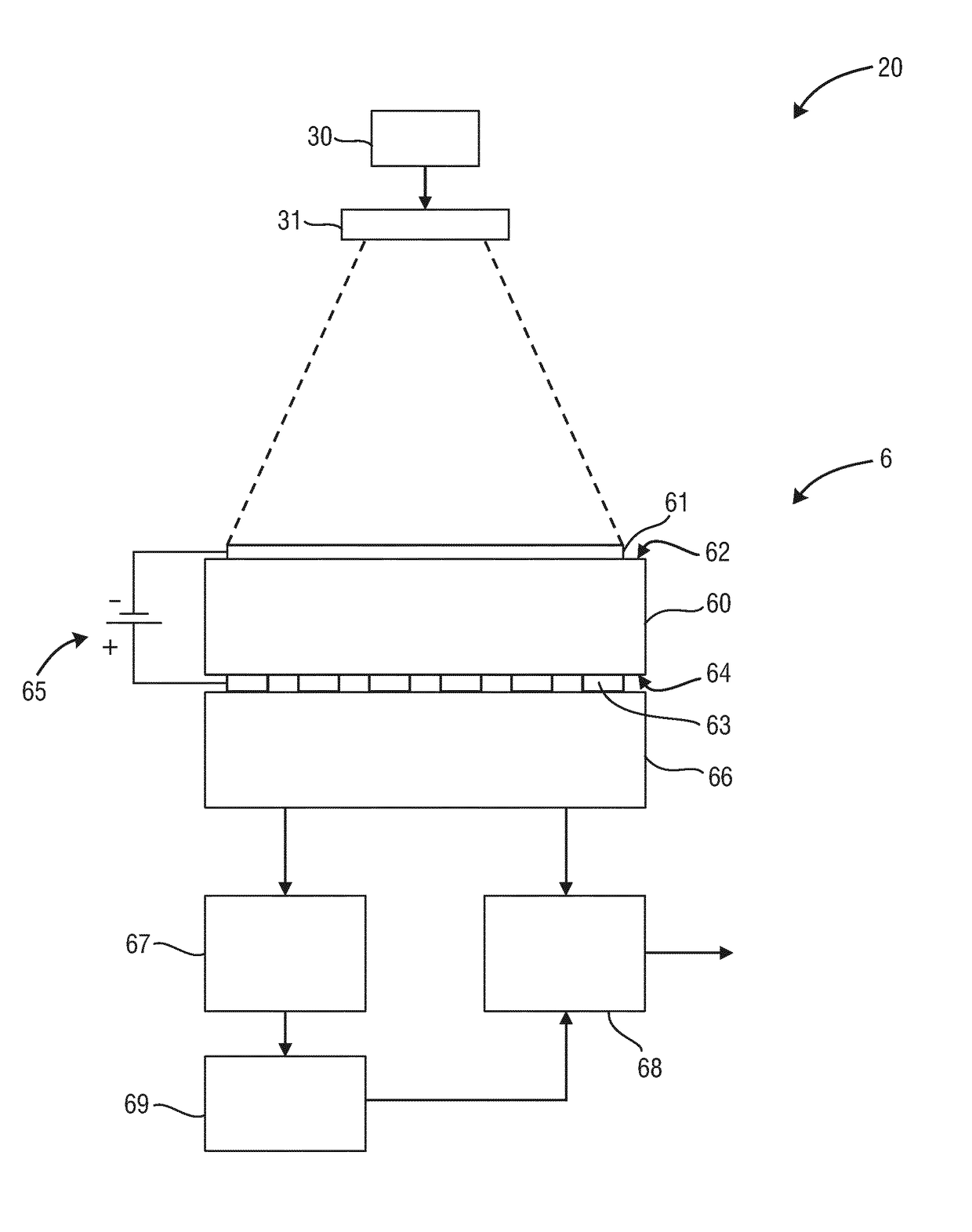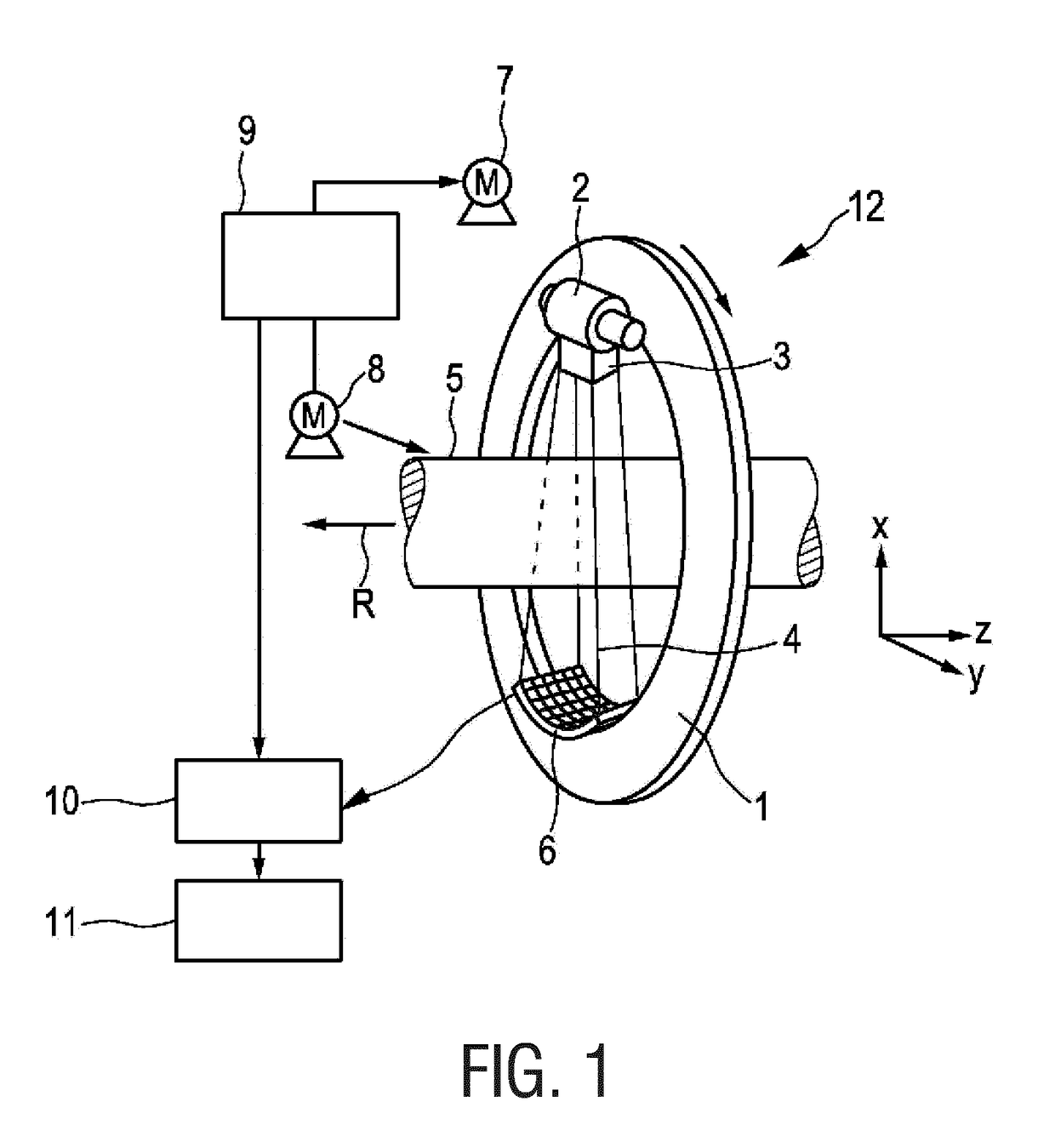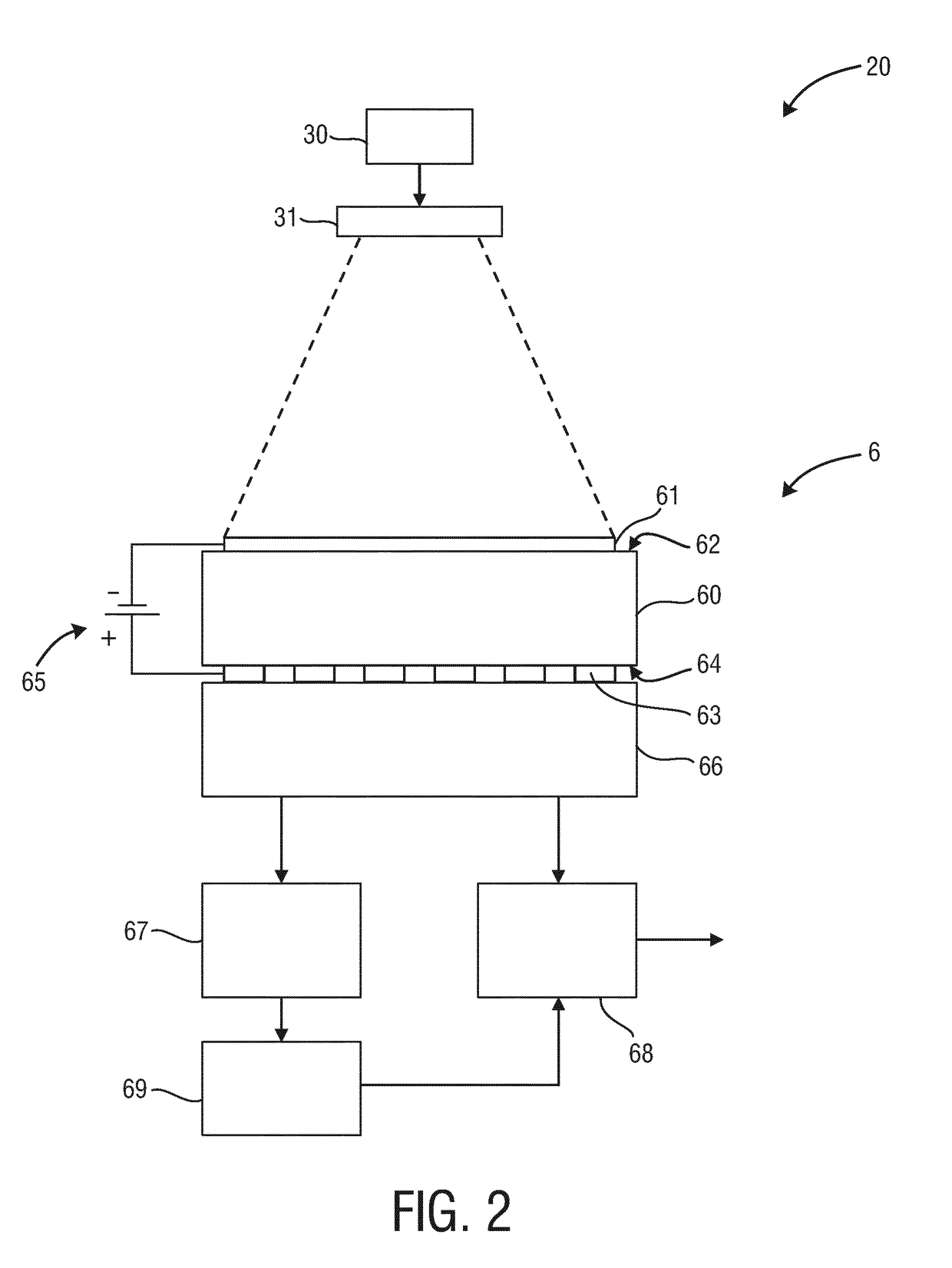X-ray detector, imaging apparatus and calibration method
a technology of x-ray detector and imaging apparatus, applied in the direction of instruments, radiation measurement, measurement devices, etc., can solve the problems of inability to perform a complete energy calibration, inability to use above two energy calibration methods, and difficulty in using gamma ray sources, etc., to achieve the effect of improving calibration
- Summary
- Abstract
- Description
- Claims
- Application Information
AI Technical Summary
Benefits of technology
Problems solved by technology
Method used
Image
Examples
Embodiment Construction
[0053]FIG. 1 shows schematically and exemplarily an imaging apparatus 12 according to the present invention for imaging an object, in this example being a computed tomography (CT) apparatus. The CT apparatus 12 includes a gantry 1, which is capable of rotation about a rotational axis R, which extends parallel to a z direction. A radiation source 2 (also called photon source), which may be a polychromatic x-ray tube, is mounted on the gantry 1. The radiation source 2 is provided with a collimator 3, which forms a (e.g. conical) radiation beam 4 from the radiation (photons) generated by the radiation source 2. The radiation traverses an object of examination, such as a patient, arranged in an (e.g. cylindrical) imaging area 5 (also called examination zone). After having traversed the imaging area 5, the radiation beam 4 is incident on an x-ray detector 6, which comprises a two-dimensional detection surface. The detector 6 is also mounted on the gantry 1.
[0054]The CT apparatus 12 compr...
PUM
 Login to View More
Login to View More Abstract
Description
Claims
Application Information
 Login to View More
Login to View More - R&D
- Intellectual Property
- Life Sciences
- Materials
- Tech Scout
- Unparalleled Data Quality
- Higher Quality Content
- 60% Fewer Hallucinations
Browse by: Latest US Patents, China's latest patents, Technical Efficacy Thesaurus, Application Domain, Technology Topic, Popular Technical Reports.
© 2025 PatSnap. All rights reserved.Legal|Privacy policy|Modern Slavery Act Transparency Statement|Sitemap|About US| Contact US: help@patsnap.com



